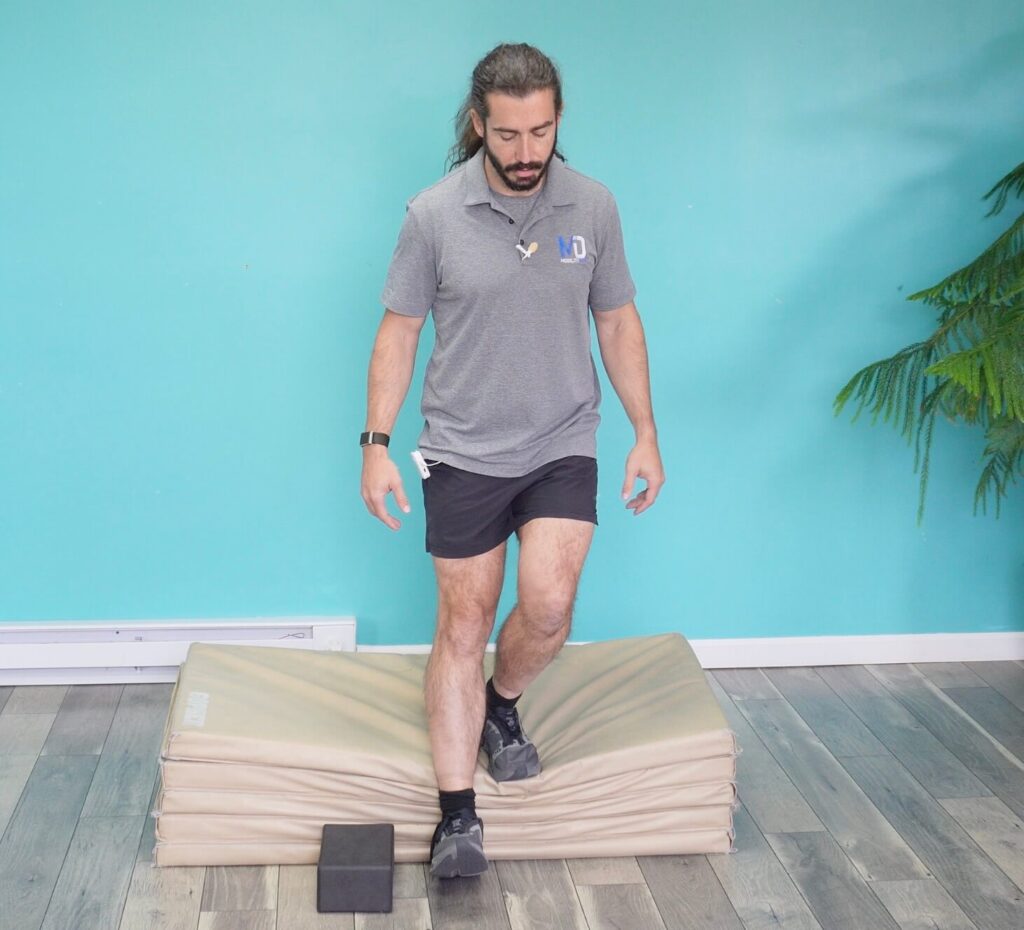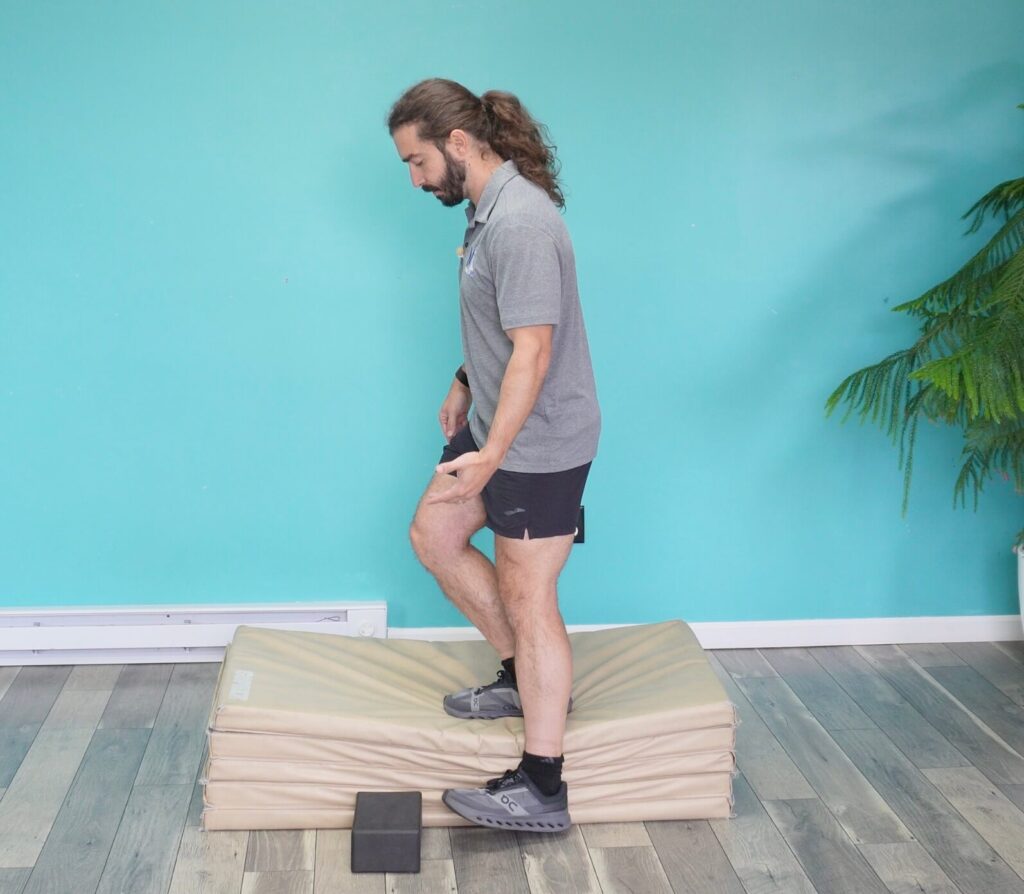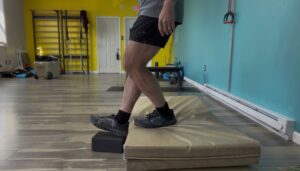If you want stronger legs, better balance, and more control when you move, the step down exercise is your new best friend. It builds strength through your entire lower body while improving the way your joints work together. This move trains real-world stability—the kind that keeps you powerful and confident no matter the task at hand. In this post, you’ll learn exactly what the step down exercise is, why it matters, and how four different variations can help you move and perform at your best.
What is the step down exercise?
The step down exercise is a single-leg movement that builds control, balance, and lower body strength. You stand on a platform or step and slowly lower one leg toward the ground, then return to standing. It sounds simple—but it’s one of the best ways to train lower body coordination and strength.
Benefits of the step down exercise
Step downs improve coordination between your hip, knee, and ankle. It teaches your body how to decelerate—or control movement as you land and change direction. It’s also key for joint health, and tendon strength. That means less stress on your knees, better hip control, and fewer injuries down the road.
Whether you’re a runner, skier, skater, field athlete, or just like to be active, step downs help you move stronger and more efficiently.
1. The Standard Step Down
The foundation for all the others – it’s important to nail this one first before moving onto other variations! Focusing on deceleration and coordination between your hip, knee, and ankle, you want your knee to go over your toes! Expect to feel your quads and glutes working together.

2. The Lateral Step Down

This one targets your glute med and glute min—the muscles that keep your pelvis level and stable. Why is this so important? If you move side to side, this is your go-to. Great for hockey players, runners suffering from hip drop, tennis players, skaters, and anyone working on balance in single-leg stance. It builds hip stability and helps prevent knee cave when landing or cutting.
3. The Forward Step Down
A bigger challenge. When you step forward, your body wants to twist. The goal is to not let it. That’s where anti-rotation control comes in. If you need control while propelling yourself forward this will be good for you. It trains your core and hips to stay steady while your leg moves slightly in front of you.

4. The Tempo Step Down
Now it’s time to really slow it down. The “tempo” can be applied to any step down variation. The key here is to count your way through each rep—three seconds down, two second hold (at the bottom), one second up. This challenges your tendons and creates a lot of neurological feedback. Tempo work strengthens your mind-muscle connection. It’s great for athletes rehabbing injuries or building resilience.
Watch The Step Down Exercise Video
How to Progress
You want to make each variation feel easy before moving on.
Do 3 rounds of 8 reps per side without wobbling or losing form.
Once that feels solid, you can change up by doing a larger step, or adding weight. If that still feels easy, move to the next variation.
The step down exercise might look simple, but it builds the foundation for powerful, pain-free movement. This slow, steady progression helps your body adapt the right way—stronger and more stable. Start basic, master your control, then level up.
Bulletproof Your Lowerbody
Hips, knees, and ankles… they’re all intertwined and dependent on the other for functional movement. When one starts to falter, the entire chain suffers. We all have that one thing… that knee injury from years ago, a lazy glute… maybe a twisted ankle.
Wouldn’t it be nice to not have a weak link? Needing a little extra attention to these things is inevitable, but what if you didn’t need to think so hard about it? MDRx programs are created to help you bulletproof and reinforce your weak links.





